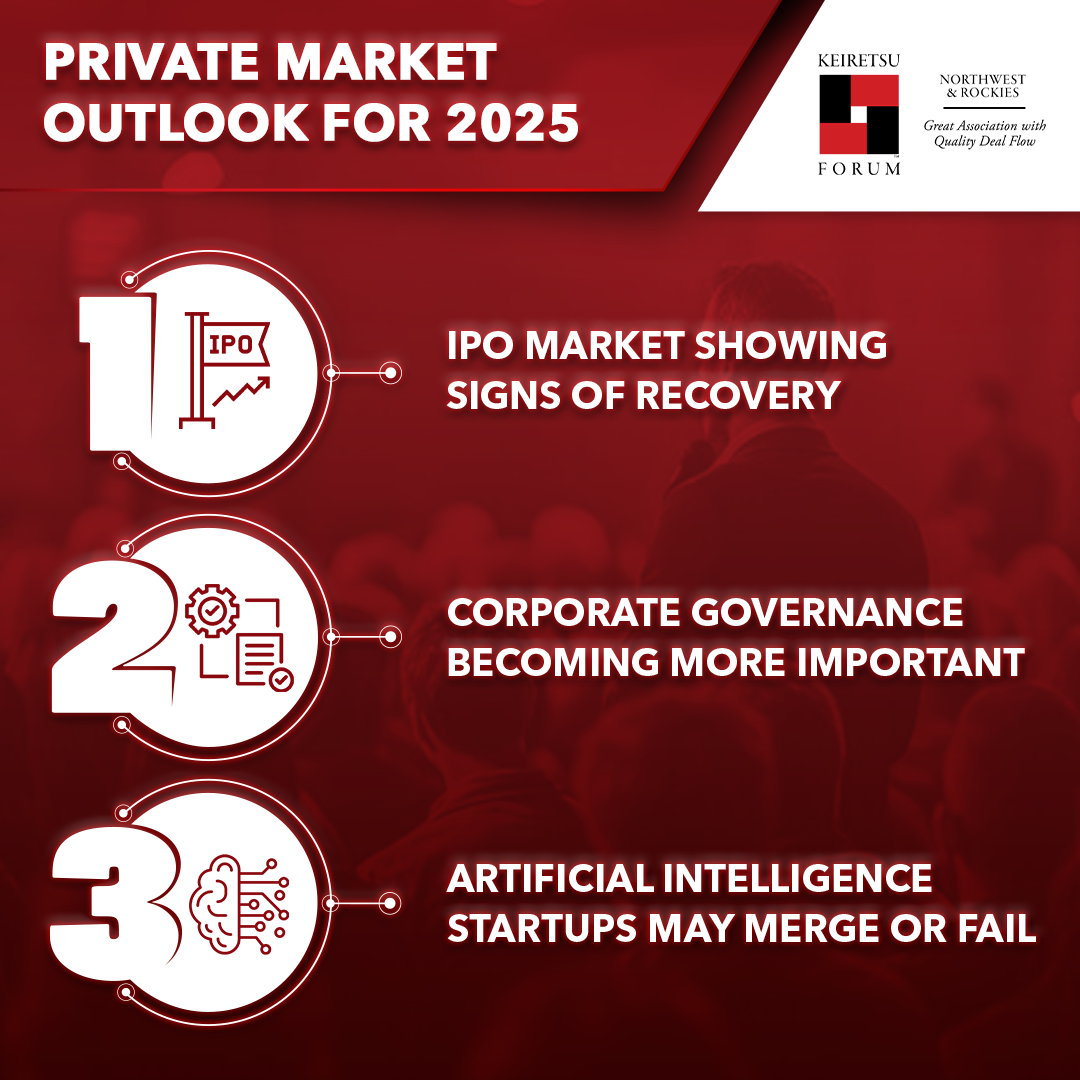
The private market in 2024 has been a mixed bag of challenges and opportunities, marked by significant shifts in venture capital, IPO activity, and the broader startup ecosystem. From cautious optimism to hard-hitting market realities, it’s been a year of pivotal moments for investors and entrepreneurs alike.
As the dust begins to settle, 2024 offers a wealth of lessons that can shape smarter strategies for the future. So, let’s look back at the year's key highlights, unpack what they mean for the investing landscape, and explore why 2025 might be the turning point we’ve all been waiting for.
The IPO Market: A Slow Recovery
The IPO market has been a rollercoaster ride in recent years. Remember 2021? It was nothing short of a frenzy. 1,035 companies went public, smashing the previous record of 480 IPOs in 2020. But as they say, the higher the climb, the harder the fall. By 2022, the party was over, with only 181 IPOs, and things didn’t improve much in 2023, which saw just 154.
Even in 2024, investors who bet on IPOs earned an average return of under 8%, a far cry from the NASDAQ Composite’s impressive 35% return. Adding to the challenge is a staggering $2.5 trillion backlog of unicorns waiting for the right time to go public. Big names like Reddit Inc. and Astera Labs made headlines with their IPOs, but they didn’t create the kind of buzz needed to reignite the market.
So, what caused this dramatic decline after 2021? A mix of rising interest rates, economic uncertainty, and the bursting of the SPAC bubble (Special Purpose Acquisition Company, which had fueled much of the IPO mania in 2021) turned investor sentiment cautious. With heightened risk aversion and sky-high valuations, many companies hit the brakes on their IPO plans, waiting for better days.
But here’s the good news: those better days might be just around the corner. Inflation has cooled significantly, down to 2.4% in Q2FY24, compared to 9% in Q2FY23, and it's sitting at 2.6% in Q3FY24. The Fed’s target of 2% is in sight, and we’re likely to hit that mark by 2025. Lower inflation, reduced market volatility, and six straight quarters of corporate growth all point to improving conditions. Even the regulatory environment, once a roadblock, has turned more supportive.
With these tailwinds, the IPO market is expected to pick up steam in the first half of 2025. But there’s a catch. We need a string of successful IPOs that hold their value post-launch so the market can rebound. Why? Because success breeds confidence. When IPOs thrive, unicorns are more likely to graduate, and late-stage investors see liquidity opportunities, while mid-stage investments get the push they need to grow.
The Venture Capital Reset
Venture capital is going through a significant recalibration, and the numbers tell the story. Corporate venture capital activity has dropped by 46%, signaling a more cautious stance from investors. Overall, venture funding fell by 35% in 2023, and 2024 isn’t looking much better. We’re now at the lowest funding levels since 2018. To put this into perspective, over 3,200 venture-backed and angel-backed companies shut down in 2023, burning through a staggering $27 billion in cash.
In Q3 2024, U.S. venture capitalists invested $37.5 billion across 2,794 deals. That’s a 34% drop in deal volume from the previous quarter and 17% lower than the same period last year. And it gets worse when you dig deeper. Many of these deals were insider or bridge rounds, often signs of companies trying to stay afloat. Despite a few massive AI funding rounds, the total dollar amount was still 32% lower than Q2 and 11.7% below the eight-quarter average.
So, what’s driving this slowdown? A big part is the lack of late-stage funding, especially in Q4FY23. Investors are pulling back, especially on large rounds, and market uncertainty makes everyone more cautious. While AI-focused startups are still getting attention, the overall funding landscape feels sluggish.
The bottom line? Venture capital is in a tough spot, forcing startups and investors alike to rethink their strategies.
Angel Investing: A Changing Landscape
Younger investors are reshaping angel investing with a preference for informal, fast-paced deal structures and a fluid approach to entrepreneurship and investing. This shift has led to new investment groups like hybrid launch places, crowd-infused venture studios, GenZ social clubs, and angel infrastructure as a service. These groups focus on diversity, improved retention strategies, and succession planning, paving the way forward for more educated investors. It is time for traditional angel investors to join the trend and keep up with the evolving landscape.
Predictions: Looking Forward to 2025
While challenges remain, there are reasons to be optimistic:
IPO Market Recovery: The U.S. economy is gearing up for growth, with S&P Global Ratings projecting a 2.7% expansion in 2024, followed by 1.8% in 2025. Investors and businesses alike have their eyes on 2025 when anticipated interest rate cuts by the Federal Reserve could spark renewed enthusiasm for IPOs.
The recovery in tech valuations throughout 2024 has already started setting the stage, making IPOs a more appealing exit strategy for investors. BMO Capital Markets predicts that US IPOs could rake in between $40 billion and $50 billion in proceeds in 2025, at least a 32% jump from 2024. The gears of growth seem to be returning, offering exciting opportunities in the IPO market.
Corporate Governance Returns: The dramatic fallout of high-profile failures like FTX, Theranos, and WeWork has sent shockwaves through the investment community, forcing venture capitalists to look hard at their decision-making processes. As a result, VCs are doubling down on the importance of implementing stronger governance structures to safeguard their investments and avoid poorly executed deals. The goal is no longer just about chasing the next unicorn - it’s about ensuring that the fundamentals, from ethics to execution, are sound enough to sustain long-term growth.
AI Bubble To Burst: Just like the dot-com bubble of 1999 or the venture boom of 2021, the current wave of AI startups is heading toward a consolidation phase. We’re likely to see weaker players either merge or fail. Currently, many AI startups are securing significant funding despite lacking customers, steady revenue streams, or clear market demand. Sound familiar? It’s much like the speculative frenzy we saw during the dot-com era. Gartner has predicted that by 2025, at least 30% of generative AI projects will be abandoned after proof of concept. Why? The contributing factors are weak risk controls, rising costs, and unclear business value.
Essentially, 2025 looks like a promising time for the private markets to return to a growth trajectory and facilitate more business. The lowering inflation rate and VC’s adherence to best practices are expected to drive positive investor sentiment and support for innovative companies.
References:
Excerpts taken from Ron Weismann's keynote at the Best of Keiretsu Forum Investment Showcase
https://stockanalysis.com/ipos/statistics/
https://www.axios.com/2024/10/11/venture-capital-deal-slow-liquidity


